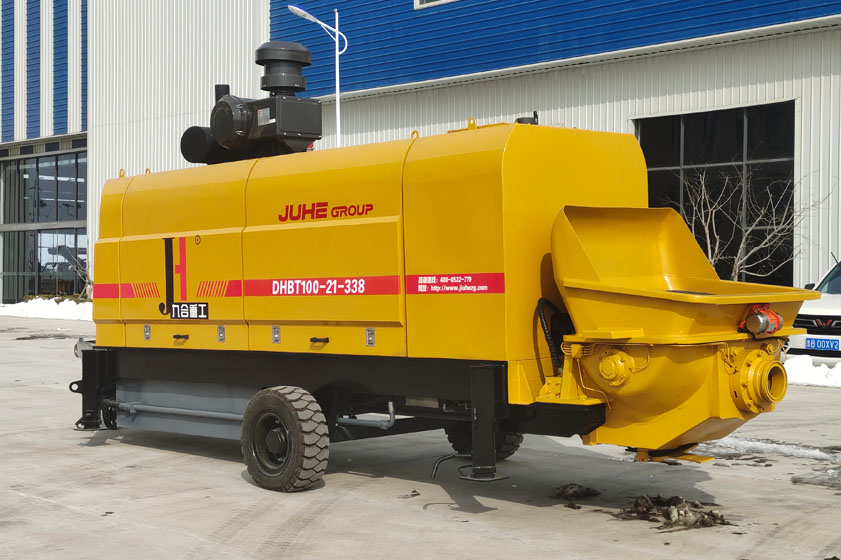News
Solution to the blockage of concrete pump
Jun. 04, 2025
In the construction of on-site pouring and reinforced concrete structures, the transportation and supply of concrete accounts for about one-third of the total time spent. When constructing high-rise or super-high-rise buildings in busy traffic areas and narrow sites, concrete trailer pumps or pump trucks are required to transport concrete to the construction site. Compared with traditional transportation methods, trailer pumps or pump trucks can not only reduce heavy physical labor, but also carry out continuous operations, thereby shortening the construction period, reducing the project cost, and improving the quality of the project. However, when using trailer pumps or pump trucks for pumping, in addition to requiring the equipment itself to have good performance, there are also strict requirements for the quality of concrete, otherwise it will cause pipe blockage and affect the construction progress. The pipe blockage problems and solutions encountered in the construction of the project are introduced as follows.
1. Pipe blockage caused by raw material quality problems
At a construction site in Sanya, Hainan, the construction party used two trailer pumps for construction, and pipe blockage occurred as soon as the pumping started. When the concrete at the blocked pipe was taken out, it was found that the concrete was very dry. After inspection, the proportion was normal, but because the porous aggregate used was waste slag discarded by a factory, it was an aggregate that was not suitable for mixing concrete. During the high-pressure pumping process, water and slurry are pressed into the pores of the aggregate, resulting in low moisture content and poor fluidity of the concrete, which causes pipe blockage. The emergency treatment method is to surround the porous aggregate, soak it in tap water for several days to absorb enough water, and appropriately increase the proportion of cement, and then use high-pressure and small-displacement pumping, and then pipe blockage will no longer occur.
2. Pipe blockage caused by improper pipe layout
At a bridge pier construction site in Liupanshui, Guizhou, two trailer pumps produced by the same company were used for construction. One was placed on the hillside for downward pumping; the other was placed at the bottom of the mountain for horizontal pumping. As a result, the horizontal pumping effect was very good, while the downward pumping always blocked the pipe. The inspection results showed that the pipe blockage was caused by improper pipe layout. Because the concrete pumped downward will have serious segregation, and the user's pipe layout method is straight downward, and no special measures are taken. When concrete is pumped downward, its flow cannot be controlled by the delivery pump. Concrete flows downward due to its own weight, resulting in serious segregation, causing the coarse aggregate to flow quickly. At the junction of the vertical pipe and the horizontal pipe, the coarse aggregate stops moving due to accumulation, while the fine aggregate and mortar behind flow slowly, causing some air to enter the delivery pipe. These air will be gradually compressed back to the vicinity of the discharge port of the drag pump as the concrete is continuously pumped, forming an air lock. When its pressure is close to the pumping pressure, the concrete cannot be pumped, causing pipe blockage. After the pipes are re-arranged according to technical requirements, the pipe blockage phenomenon disappears.
3. Pipe blockage caused by improper concrete mix ratio
At the construction site of Longyan Expressway in Fujian, a construction unit used dozens of drag pumps from the same manufacturer for construction at the same time, using commercial concrete. Because the working line is long and the demand for concrete is large, there are many concrete suppliers, resulting in serious pipe blockage in some sections of the drag pump. After the company's engineers went to the site to understand the situation, they concluded that there was a problem with the quality of the concrete. When checking the mix ratio of concrete, it was found that there was too much coarse sand and too little medium sand in the concrete. Since the coarse sand has poor water absorption, water retention and fluidity, the aggregate was unevenly distributed in the cement paste, resulting in stratification and segregation, which increased the pumping resistance. After switching to concrete from other suppliers, pumping returned to normal.







